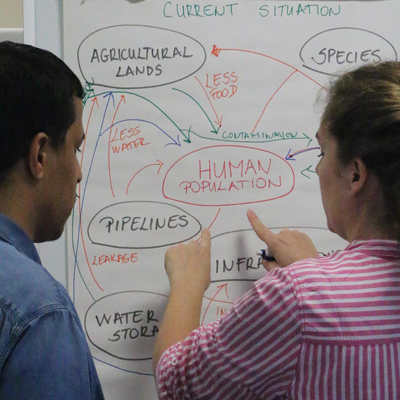Cranfield University will be reducing carbon emissions by 1,214 tonnes per year, following improvements to the Cranfield campus heating system and investment in LED lighting and solar power capacity. The upgrades were made possible by an award of £4.9 million, through Phase 2 of the Public Sector Decarbonisation Scheme (PSDS).
Heating, lighting, and solar power developments
The improvements from this funding centre on the university’s heating system. With a 24-year-old inefficient boiler heading towards its end-of-life usage, part of the funding has replaced this with an air source heat pump, which will help reduce the running of the gas-fired combined heat and power unit.
As well as upgrading the building management system and installing LED lighting the University’s solar farm will also be extended to help balance the electrical system, as reliance on the existing gas-fired combined heat and power is reduced.
Reducing carbon emissions and bringing savings
Cranfield University has committed to net zero carbon emissions by 2030, and this project will reduce carbon emissions by 1,214.35 tonnes per year – equivalent to over 3 million miles driven by an average car[i]. The improvements are also set to save the University £54,488 per year.
Gareth Ellis, Energy and Environment Manager comments “Cranfield University has set an ambitious target to achieve net zero carbon emissions by 2030. To achieve this the use of gas on site must be reduced both for heating and for electricity generation. The funding through PSDS Phase 2 has allowed us to significantly reduce gas usage on the district heating. The extension to the solar farm, installation of LED lighting projects and the large battery help to reduce electricity use and better balance demand.”
This project is the latest venture in a long-standing partnership between Cranfield and Salix - which provides Government funding to the public sector to improve energy efficiency, reduce carbon emissions and lower energy bills.
Sustainability embedded across the University
Cranfield University is a leader in energy and power and has research expertise in renewable energy systems.
The University uses its own campus as a ‘living laboratory’ for technologies and new approaches that deliver social, economic and environmental outcomes. As part of this, a campus-wide sensor network harvests data which facilitates research projects and is used in teaching.
The Cranfield sustainability network is an active pan-University group bringing together practitioners, staff and students to examine and explore sustainability initiatives.
Notes for editors
Technical breakdown
- Installation of an air source heat pump to replace inefficient, end-of-life boiler
- Heating pipework – improving distribution of heat across network
- Building Management System – to improve control of energy
- LED Lighting – to reduce reliance on electricity
- Solar – extension to existing solar farm
Public Sector Decarbonisation Scheme (PSDS)
The Public Sector Decarbonisation Scheme is funded by The Department for Business, Energy and Industrial Strategy (BEIS) and delivered by Salix Finance. The scheme was made available for capital energy efficiency and heat decarbonisation projects within public sector non-domestic buildings, including central government departments and non-departmental public bodies in England only, to deliver the following objectives:
1. Deliver stimulus to the energy efficiency and heat decarbonisation sectors, supporting jobs.
2. Deliver significant carbon savings within the public sector.
Carbon emissions equivalencies calculator:
[1] https://www.epa.gov/energy/greenhouse-gas-equivalencies-calculator#results


